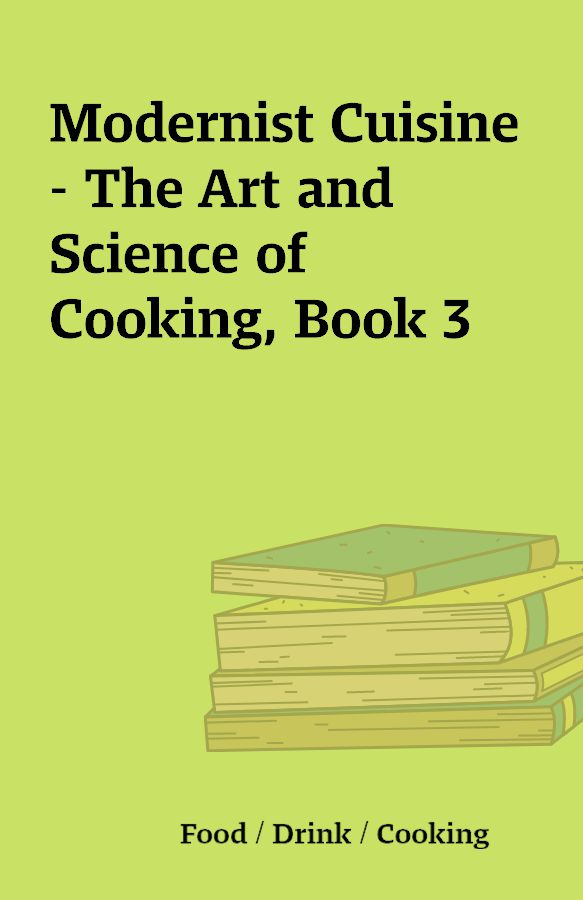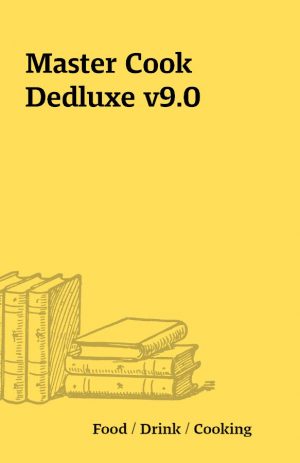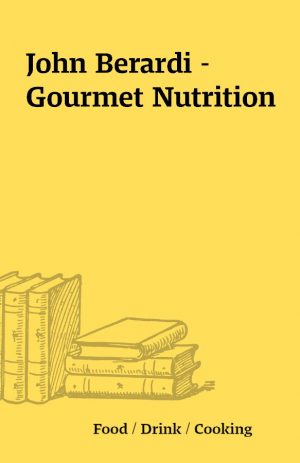Modernist Cuisine – The Art and Science of Cooking, Book 3
Modernist Cuisine 3.PDF
[ 1 eBook – PDF ]
Description
Here’s another camera scan, much like book 3 but slightly higher quality. Quite readable, and should do nicely until a good scan is done. BEFORE IT IS MEAT, IT IS MUSCLE. In the living animal, muscles convert chemical energy into mechanical activities such as running, swimming, or flying. In the kitchen, these activities have come to an end, but their influence lives on in surprising ways. The chef’s primary goal when serving a meat or seafood dish is to maximize juiciness, tenderness, and flavor. But what is juiciness and what are the factors that determine it? What exactly is meant by flavor and where does it come from? As we will see, there are many common misconceptions based on an incomplete understanding of the unique biochemical and molecular nature of meat that can lead cooks astray, or at least prevent them from making the most of a cut or fillet.Chapter 11 on Meat and Seafood dedicates more than 250 pages to explaining the fundamental nature of muscle and other edible animal parts, how they are transformed into food, and what happens as they are cooked, cured, marinated, or smoked. Dozens of parametric recipes, example recipes, and step-by-step “how-to” features guide cooks through the best strategies for cooking and help them avoid common mistakes and improve their technique, thus empowering them further to experiment and innovate.Chapter 12 on Plant Foods is dedicated to poor, defenseless plants. Without hides or bones for fortification and anchored in the soil, it seems they’re no match for those of us who would make their tender shoots into a light lunch. But because they’re so vulnerable, plants have evolved elaborate physical and chemical blockades to dissuade us and other fauna from serving ourselves. They say it was a brave man who tried the first oyster, but who do you suppose first had the notion to try an artichoke? Or cyanide-laced cassava root? The very cells of most plants—bolstered by stiff, indigestible fiber, or protective toxins—put up a fight.Fruits are the exception. There’s a reason they’re sweet and ready to eat: they evolved so that animals will eat them, then disperse their undigested seeds. But usually people alter the foods that we classify as vegetables, starches, and grains before they serve them, whether by steaming or boiling them, salting or pickling, frying or microwaving—or even giving them a quick plunge in liquid nitrogen. All these methods of preparing and preserving produce and grains are covered in this volume, which includes instructions for:cooking produce and meats sous vide;forming sausages and other forcemeats;making risottos and pastas;making batters and breadings;salting, pickling, fermenting, dehydrating, smoking and freeze-drying produce;brining and curing meats and seafoods;making puffed snacks, crispy skins, and fruit and vegetable chips;and much more.
You must be logged in to post a review.






Reviews
There are no reviews yet.